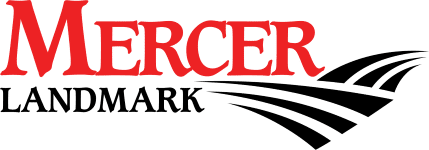What is Unified IT Management?
Unified IT management focuses on centralized and remote IT management to drive radical efficiency for IT teams, deliver on IT automation at scale, reduce risk across IT operations, and improve the productivity and satisfaction of today’s hybrid, remote, and distributed workforces.
Unlike traditional approaches to IT, unified IT management aligns the entire IT organization around the goal of driving business growth and productivity by avoiding, negating, and solving business user pain. By focusing on user outcomes, unified IT management highlights the impact of IT on business growth and elevates IT operations to a strategic business contributor.
According to industry analysts IDC, an integrated approach to IT management delivers:
- Plug-and-play toolsets that simplify operations
- Unified data models that support tool integration
- Increased opportunity for automation
- Improved IT efficiency
- Improved performance and availability
- Improved user satisfaction.
The Unified IT Management
Framework
Centralize and consolidate IT management
ITSM, ITAM, ITOM, RMM, BDR, IDP… IT teams use 20+ tools on average to manage endpoints, secure their environment, and support end users. Consolidating solutions and centralizing management drives radical efficiency, improves security, and helps you make better informed decisions.
Make automation part of your DNA
Complex tasks are prone to human error and repetitive tasks take time away from critical projects. IT teams must invest in automation to drive standardization, reduce human error, and drive radical efficiency across all IT function. Mature automation drives better technician outcomes and allows IT to focus more on strategic outcomes.
Deliver user productivity and satisfaction
Align behind modern workflows
Benefits of Unified IT Management
Radical IT efficiency
Centralized management and automated workflows drive productivity and reduce support strain.
50–70%
faster issue remediation
Improved security
Enhanced visibility into endpoint and user activity – along with automated alerts and mitigation – is more essential than ever to securing modern environments.
90% faster patching with higher patch compliance rates
More productive users
More proactive and efficient support combined with standardized delivery ensures end-users are more satisfied and productive.
20–30%
fewer support tickets
Reduced risk
Building a single source of truth for IT makes it easier to set and maintain compliance baselines.
Up to 80% reduction in downtime
Reduced costs
From reducing stack complexity to reducing training requirements for technicians, unifying IT operations helps reduce IT costs without losing capabilities.
>5% lower
IT costs
Why now?
The way we work is changing. IT teams have not had the bandwidth or time to adjust their own processes. While productivity suites and end-user applications have transitioned to a cloud-based SaaS model that supports modern work environments, IT tools have lagged behind, requiring on-premises, network- or domain-based models to deliver services.
The above chart shows the percentage of IT teams leveraging on-premises versions of software versus cloud-based solutions. Based on a 2021 Ninja survey.
That model works well for traditional location-based work environments, but treats remote and distributed employees as second-class citizens. With almost two-thirds of American employees working at least partially remote in 2022, IT teams need to unify IT operations to deliver modern IT services.
Your world without Unified IT Management
The Unified IT
Management Platform
Manage client endpoints at scale with the only RMM rated #1 4+ years in a row.
More about RMMGet market-leading endpoint visibility, control, and automation for more secure and efficient device management.
More About Endpoint ManagementIdentify, evaluate, and deploy patches automatically to improve patch compliance and endpoint security.
More About Patch ManagementDeploy, patch, and manage applications at scale for faster onboarding, better support, and improved endpoint security.
More About Software DeploymentDetect changes in endpoint health and performance to create context-rich alerts and tickets that drive proactive management.
More About Monitoring & AlertingAutomate common IT tasks on-demand, on-schedule, or in response to device changes to reduce time spent on repetitive actions.
More About AutomationQuickly and securely take control of remote endpoints for device setup and support tasks.
More About RemoteProtect your critical business data from loss due to accident or ransomware attack with cloud-first endpoint backup.
More About BackupGet visibility over your IT estate, reduce your attack surface, harden endpoints, and manage your security applications from a single-pane.
More About SecurityQuick to deploy, easy-to-use, with a single intuitive UI
Pay monthly for what you need, no cancellation fees
#1 ranking in technical support for 3 years in a row
Free onboarding, free training, free support

